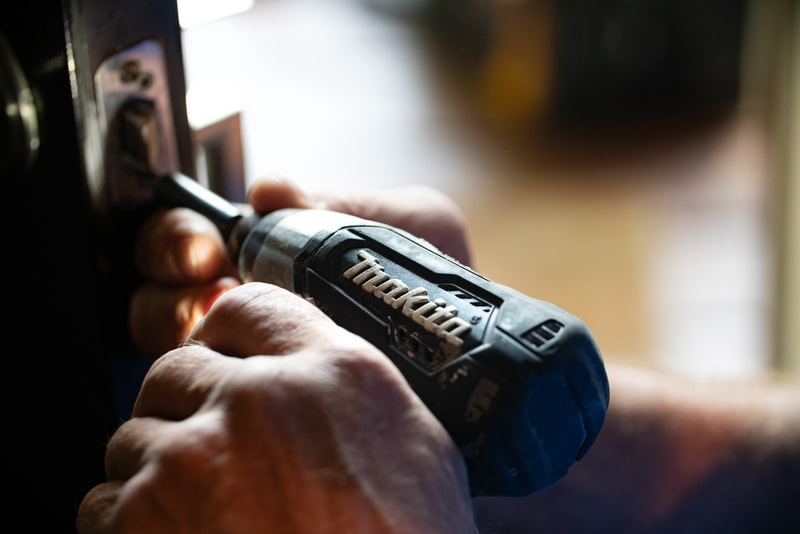Often one wonders when it is best to use a drill driver and when it is better to use an impact driver. Both machines can be used to fasten screws and both models can be used to drill in various materials. We explain below when it is best to choose which machine and how to Buy Online Power tools in Dubai.
The difference between a drill driver and an impact driver
What exactly is the difference between a drill driver and an impact driver and which machine is used for which job? To get a good idea, we first describe the two machines and explain their advantages and disadvantages.
Screwdriver drill
A drill driver is equipped with an adjustable slip clutch, a drilling mode and 2 adjustable rotational speeds.
The adjustable slip clutch is designed for precise tightening. If the countersunk head of the screw completely touches the material underneath, the machine will slide to prevent the screw from turning too far into the material. In sensitive materials such as plastics or electrical applications, the slip clutch makes perfect sense. When you want to screw in a large diameter screw, the machine can already start to slip before the screw is completely in the wood.
Often times the drill / driver is set to drill mode, which can cause the machine to be overloaded (with all the risks that this entails). It is important to remember that in the first setting, the machine spins at less rpm, but has higher torque. In position 2, it is the other way around; the machine turns more with less torque. Therefore, setting 1 is more suitable for screwing and setting 2 for drilling. In practice, the machine is often left in position 2 (drilling mode) with the clutch deactivated, because it works well and quickly. The risk is that, especially when using large screws, the motor will run too slowly for the drill head. The heat will build up and the engine will burn. If you want to deal with large screws on a regular basis, it is absolutely worth buying an impact screwdriver.
Impact screwdriver
This machine has an impact head that provides power, instead of the motor as in the drill / driver. Even using large screws, the motor will not consume more battery power. This will prevent overloading the motor and the battery. This is why impact drivers are very suitable for handling (very) large diameter screws. Impact screwdrivers do not have a slip clutch, so when working with delicate materials, care must be taken not to drive the screws too far or even through the material.
Impact screwdrivers require little or no force to hold in place while screwing, unlike regular screwdrivers which exert (considerable) force on the wrists. This allows you to work very easily with an impact driver in difficult positions, for example in a corner.
In cases where you cannot stand right behind the machine to absorb the power of the machine, the impact driver offers a solution.
What a lot of people don’t know is that you can also drill with an impact driver. However, you must make sure that the bit is small enough not to trigger the impact mechanism. Cylindrical wood bits up to 10 mm and metal drills up to 6 mm are generally well suited. Other types of drills or larger diameters are not recommended and will cause inaccurate drilling or rapid wear of the drills. Make sure you buy a drill with a ¼ ”bit connection, otherwise it will not fit into the machine. The high speed of the machine makes drilling much faster than with a regular drill / driver. This high speed also ensures that the machine is suitable for self-drilling or self-tapping screws.
So if you place a lot of metal stud walls, for example, the impact screwdriver can be a great solution. Be sure to use a special plasterboard end cap or fastener to make sure the screws are flush with the plasterboard. A potential drawback of the impact driver is that the impact mechanism, like a regular hammer drill, produces more noise than a driver drill.
Which machine should I use?
Screwdriver drill
Suitable for fine, precise and light screwdriving applications
Delivers power from the engine
Adjustable speed for a wide range of applications
For use with cylindrical, flat, spiral wood bits, hole saws, drills
metal ets and screwdriver bits.
Maximum drill diameter and length vary by model
Impact screwdriver
Suitable for use with large and wide screws
Delivers power to the hammer head, reducing the load on the motor and battery
High speed
Only suitable for cylindrical wood drills up to 10 mm and metal drills up to 6 mm
Also very suitable for fixing:
Plasterboard on wooden constructions (in combination with a nose or a depth adjustable drill bit)
Metal sheets (thin)
Metal stud plates


